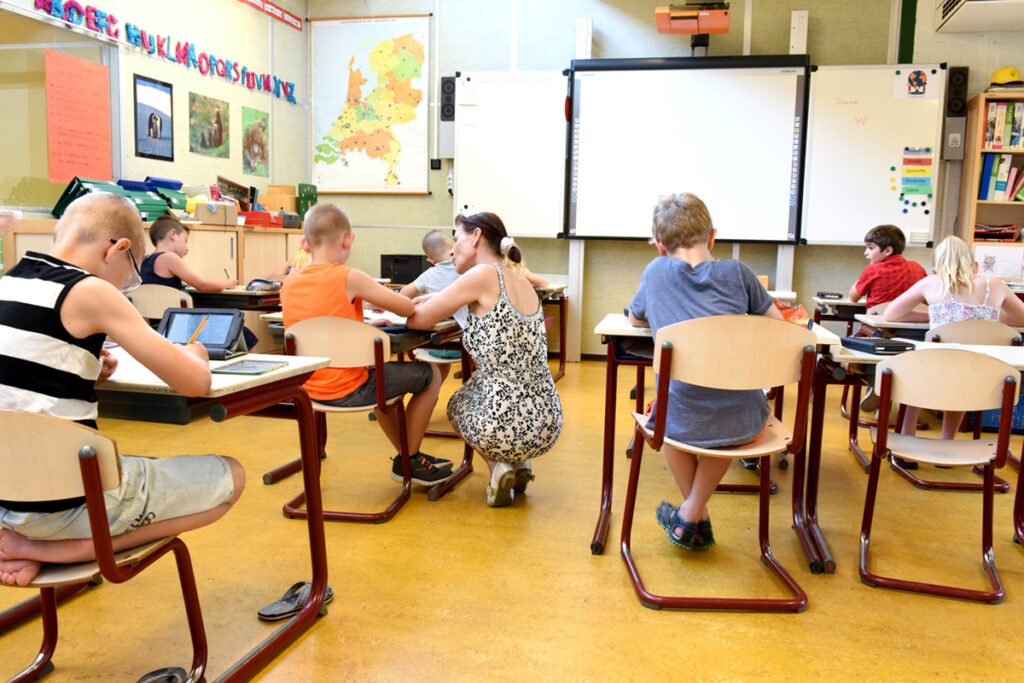Main Menu

Poor indoor air quality can cause a range of chronic —and sometimes subtle— effects on student health, academic performance and overall wellbeing. In recent decades, many factors have combined to pollute indoor environments in schools. Many of these indoor air pollution sources may not even be immediately obvious to teachers or parents.
According to studies conducted by the U.S. EPA, indoor levels of pollutants may be two to five times higher than the levels of pollutants found outdoors. Since students and staff spend approximately 180 days (about six months) in school buildings every year, creating clean air classrooms and healthy learning environments are more critical than ever.
Below are three ways you may be unknowingly contributing to the poor indoor air quality of your school buildings…
#1: Allowing Buses to Idle Next to School Buildings
Buses and other vehicles frequently idle near schools and can create an epicenter for exposure to concentrated diesel exhaust. Not only does this release a significant amount of pollution into the air, the diesel fumes can infiltrate indoor air systems through the ventilation system. Students are already exposed to these pollutants while waiting outdoors and during daily school bus rides to and from school, so districts should make every effort to limit this exposure once children enter the building. Young students are particularly vulnerable to air pollution because their lungs are still developing, and they do not have the same defenses that adults do against these harmful chemicals.
#2: Deemphasizing Maintenance Needs
Funding cuts have required many schools to reduce the number of custodial and maintenance staff, which has negative effects on the indoor air quality. Putting off maintenance or limiting staff is a difficult situation and can result in more costly repairs down the line.
The decision to defer building maintenance in order to save money can lead to problems like poor ventilation and mold growth. Ventilation systems in many schools do not inactivate pollutants in the air, instead, they simply recycle stale indoor air. Additionally, mold infestations can make asthma and allergy symptoms to worsen and, in extreme cases, may even cause neurological problems or cancer.
The good news is that there are grant programs available to support necessary facilities’ improvements to support indoor air-quality, creating healthy learning environments.
#3: Using Toxic Materials
One of the biggest air quality offenders is the usage of chemical-based products in day-to-day classroom environments. Schools contain a wide variety of toxins – such as art and science supplies, materials used for the industrial arts, cleaning supplies and HVAC (Heating, Ventilation and Air Conditioning) equipment – which can introduce hazardous pollutants into the air. Additionally, outdated construction materials, carpeting and upholstery can all release toxins. Schools should take the time to research alternative options for equipment to help minimize contaminants.
Are You Ready to Create a Healthier Educational Environment?
Fortunately, there is a catch-all solution to this problem that will immediately go to work improving the indoor air quality in your school buildings. Proactive school leaders are choosing to install medical-grade air purification technology that has been used and trusted by renowned medical institutions, like the Mayo Clinic and Cleveland Clinic, for the past decade. Together, we can work to overcome the obstacles to clean air and create a healthier leaning environment for students, faculty and staff.
Watch this video to see how Indian Hill School District took action to control their indoor air quality by partnering with Protect|ED. The district, which serves more than 2,100 students, installed 143 units in 2022. Since the installation of the units, the school has seen a seen a major difference in the quality of the air.
“The health and safety of our school community is our No. 1 priority,” said Indian Hill Superintendent Kirk Koennecke. “COVID-19 forced all school administrators to examine resources to enhance air quality. This system’s benefit is beyond COVID; it combats the variety of viruses and germs our students and staff members are exposed to every day. Every student, teacher, staff member and visitor deserves to breathe clean air.”
Set up your consultation today! Visit CleanAirInSchools.com.
Receive customized consultation and information about using Protect|ED air quality products in your facilities.